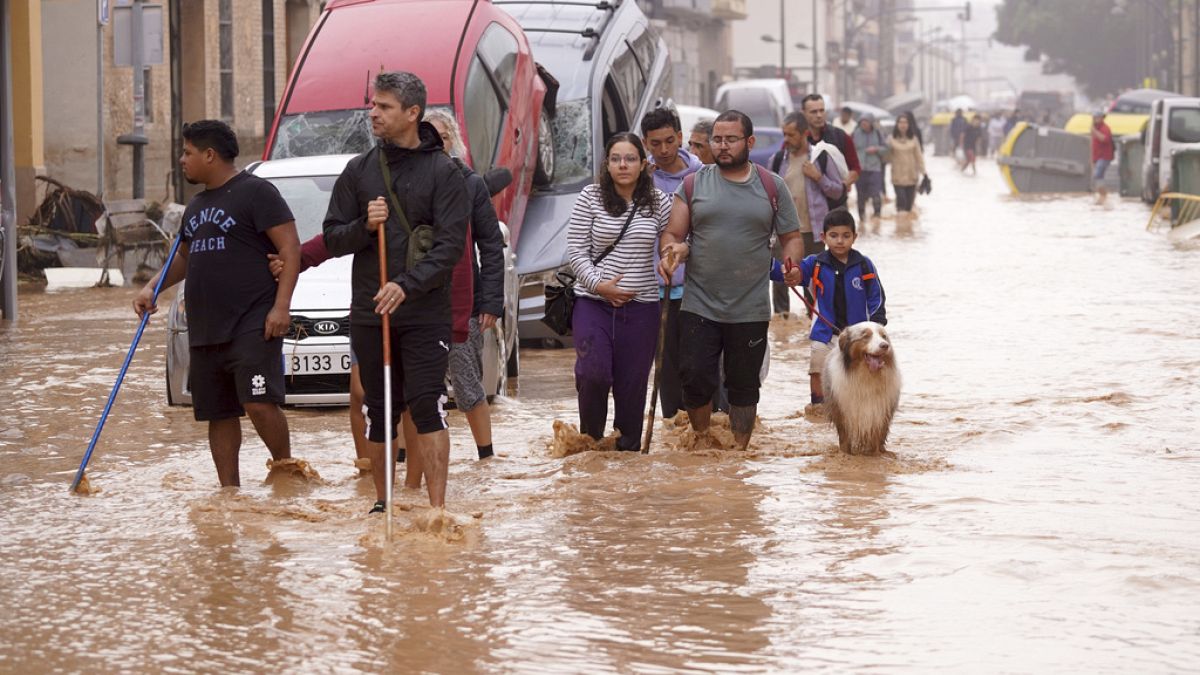Catastrophic floods in Spain linked directly to climate change

From drought that killed a quarter of a million in the Horn of Africa and heatwaves in Europe that cost some 90,000 lives to what may be the deadliest floods in Spain’s modern history – new analyses draw a direct link between ever more frequent extreme weather and climate change.
With the death toll close to 100 after a year’s worth of rain fell in a day in parts of eastern and southern Spain this week, rapid analysis by climate scientists suggests global heating made the event twice as likely to happen and the downpours considerably more intense.
“No doubt about it, these explosive downpours were intensified by climate change,” said Dr Friederike Otto, who heads the World Weather Attribution (WWA) project at Imperial College London’s Centre for Environmental Policy.
Average temperatures worldwide are already perilously close to the 1.5°C above the mid-nineteenth century baseline where governments agreed to try and halt global heating in the landmark Paris Agreement of 2015.
“With every fraction of a degree of fossil fuel warming, the atmosphere can hold more moisture, leading to heavier bursts of rainfall,” Otto said. “These deadly floods are yet another reminder of how dangerous climate change has already become at just 1.3°C of warming.”
Yet, in the run-up to the COP29 climate summit in Azerbaijan’s capital Baku next month, the UN warned last week of a huge gap between government action and climate science. On the current trajectory, temperature rise is set to exceed 3°C before the end of the century.
Imperial’s WWA team has developed a protocol that allows them, in cooperation with local scientists and meteorologists, to rapidly assess in the immediate aftermath the extent to which climate change triggered or intensified an incidence of extreme weather.
The deadly floods around Valencia came as the group already planned to release today a report drawing a clear link between and man-made climate change and ten of the most deadly extreme weather events of the past two decades.
The highest death toll was linked to a drought in the Horn of Africa that led to some 258,000 fatalities in 2010. Cyclone Nargis killed an estimated 138,000 or more in Myanmar in 2008, the WWA scientists found in the analysis of weather incidents.
“We know there is no such thing as a natural disaster. It is the vulnerability and the exposure of the population that turns meteorological hazards into humanitarian disasters,” their report notes.
But while citizens of wealthier countries may be less vulnerable, they are clearly very far from immune to the dangers of extreme weather. Two of the deadliest recent events recently were heatwaves in central and western Europe in 2022 and 2023, which were linked to around 90,000 deaths.
The researchers warn that in many cases, the numbers of deaths reported are likely underestimates, especially in the case of heatwaves affecting poorer countries.
“The massive death tolls we keep seeing in extreme weather shows we are not well prepared for 1.3°C of warming, let alone 1.5°C or 2°C,” said Roop Singh, a climate risk advisor at the Red Cross/Red Crescent Climate Centre. All countries need to prepare for a future where such events are more frequent and more intense, she said.
“But ultimately, we need to cut emissions,” Singh said. And that was the core message for world leaders, ministers and EU officials as they prepare for the latest round of UN climate talks in Baku. The main agenda point this year is a new fund to help developing countries cope with climate change and avoid the fossil-fuel dependency that led us to this point.
“COP29 has to accelerate the transition away from fossil fuels, the primary reason we are now experiencing such dangerous weather,” said Joyce Kimutai, a researcher at Imperial’s Centre for Environmental Policy.
“We also need to see meaningful finance pledged to the loss and damage fund. The $700 million pledged at COP28 is just a drop in the bucket compared to the billions in damages poor countries experience each year,” Kimutai added.
This year is set to be the hottest ever, breaking the record set in 2023. Sjoukje Philip, a researcher at the Royal Netherlands Meteorological Institute said it was no longer possible to look at climate change as the “faraway, distant threat” it seemed to many at the turn of the millennium.
“The body of evidence linking extreme weather to climate change will continue to grow,” Philip warned.
World News || Latest News || U.S. News
Source link



